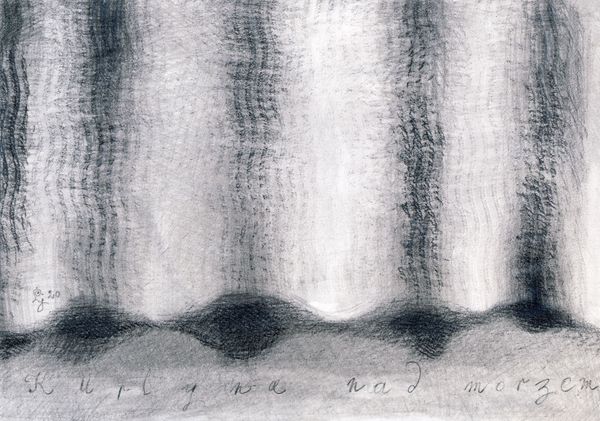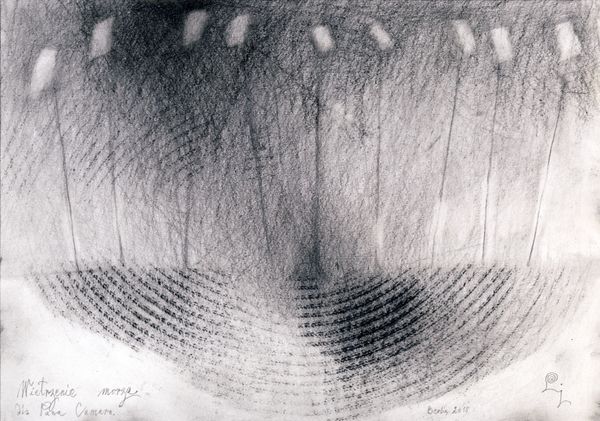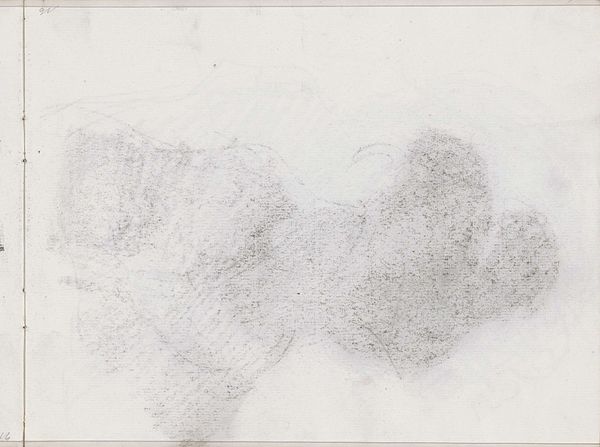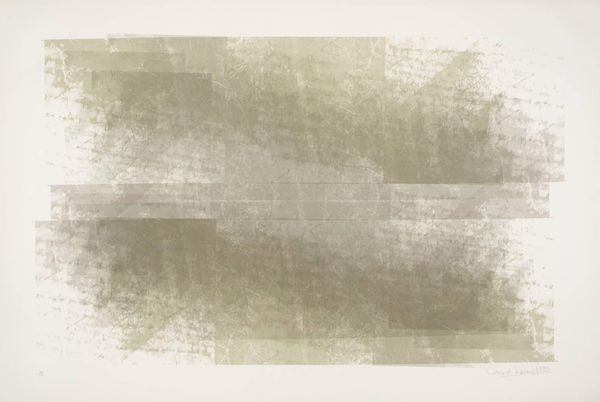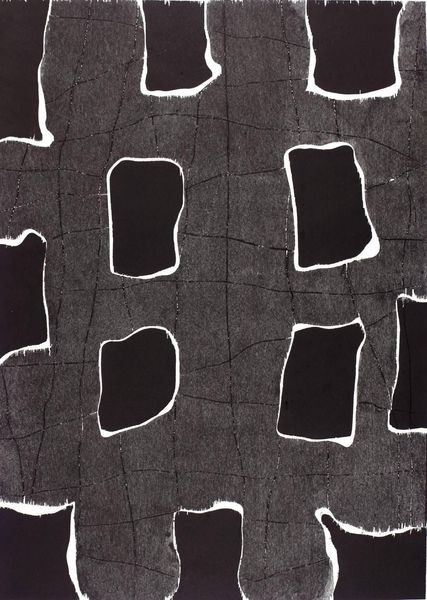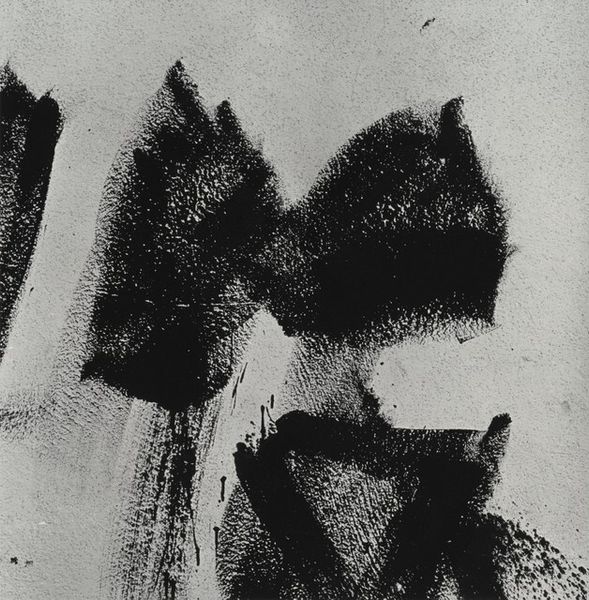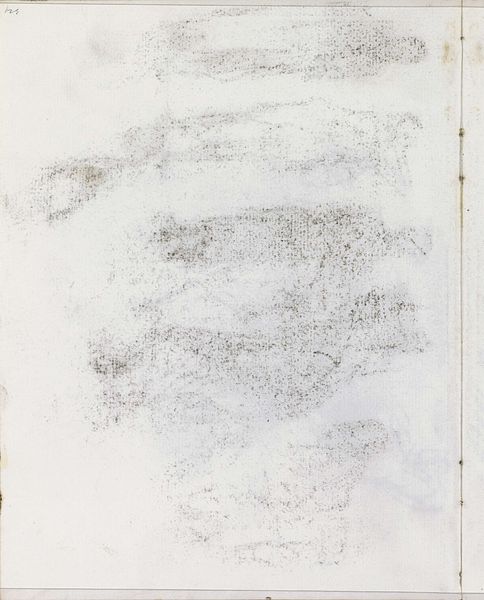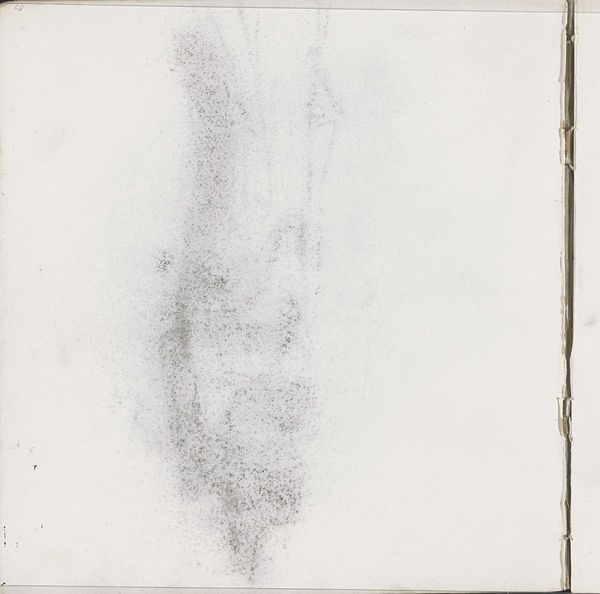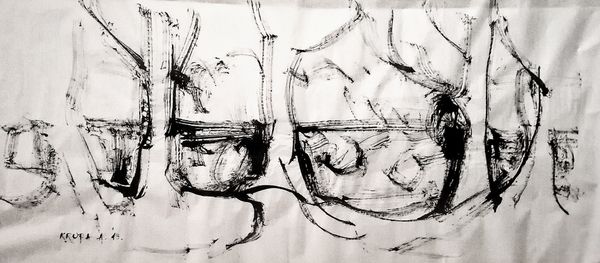
drawing, graphite
#
drawing
#
non-objective-art
#
geometric
#
abstraction
#
line
#
graphite
Dimensions: 21 x 30 cm
Copyright: Lech Jankowski,Fair Use
Curator: This is "Białe, białe, białe," a drawing made with graphite in 2019 by Lech Jankowski. What is your initial read of this composition? Editor: The subdued grayscale palette immediately evokes a sense of quiet melancholy, and the forms, these ambiguous shapes... they feel unsettling and ephemeral, especially juxtaposed as they are. Curator: Jankowski's non-objective style invites us to consider broader societal contexts that might inform this unease. Could it reflect Poland’s turbulent socio-political climate in recent years? The lines, repetitive yet imperfect, perhaps mirror systemic anxieties or bureaucratic processes. Editor: Perhaps, but focusing purely on the formal qualities, notice how the verticality of the upper lines creates a sense of division or fragmentation? The delicate, almost vibrating marks convey movement and a subtle energy that both attracts and repels. How do the drawn lines activate the visual field? Curator: That movement might symbolize political instability, the precariousness of identity in a shifting landscape, or the constant negotiation required within restrictive systems. I see echoes of feminist critiques of power structures— the work seems to be "leaking", in some way resisting containment, no? Editor: An interesting observation. The contrasting dark and light gradations definitely lend a sense of dimensionality, while also pushing back against a simple dichotomy. What could these forms symbolize in that formal push and pull you note? Curator: Symbolically, one might connect these "cups" to marginalized bodies, seen as empty vessels awaiting filling or validation within a patriarchal framework. Their simple, almost childlike rendering adds to the vulnerability, hinting at a loss of innocence or autonomy. The title “White, white, white”, repeated three times seems ironic in this gray rendering, but perhaps evokes a kind of emptiness— whiteness as absence or lack. Editor: I see. Even without such considerations, those lower forms ground the overall composition, offering a base, but do not quite visually "resolve" or harmonize, leaving us with this unresolved tension we noted initially. Ultimately, the stark simplicity of line and shade lends an air of introspection that goes beyond cultural critique, but remains undeniably powerful in its minimalism. Curator: Yes, it allows the viewer space for their own interpretation while simultaneously demanding reflection on deeper, often uncomfortable, truths. It resonates both formally and politically. Editor: A fitting final word on this interesting work.
Comments
No comments
Be the first to comment and join the conversation on the ultimate creative platform.
